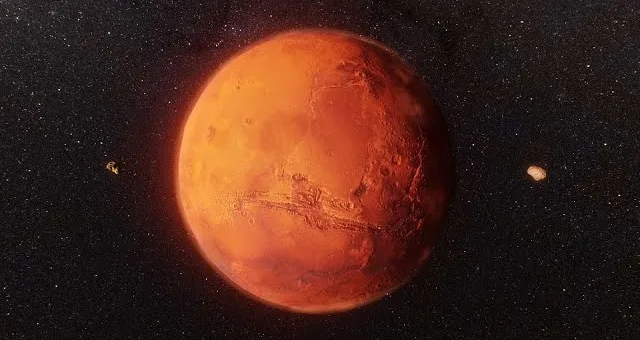The Perseverance rover’s find of a peculiar Martian rock may suggest the presence of ancient microbial life on Mars.
NASA’s Perseverance rover has uncovered a rock on Mars that may offer clues to the planet’s ancient past, potentially revealing signs of microbial life. The rock, named Cheyava Falls, was discovered on July 21 along the northern edge of Neretva Vallis, a river valley within the Jezero crater.
The rock, measuring approximately 3 feet by 2 feet, displays distinctive off-white spots and vein patterns. Preliminary analysis indicates the presence of organic material and evidence of past water flow. This combination of features is intriguing to scientists, as it may suggest that the rock once supported microbial life.
Ken Farley, the project scientist for the Perseverance mission at the California Institute of Technology, described Cheyava Falls as “the most puzzling, complex, and potentially important rock yet investigated.” He noted the rock’s organic compounds and colourful spots, which could have been used by microbial life for energy. However, Farley emphasized that it remains unclear whether these features are the result of biological activity or non-biological processes.
The rock’s surface includes large white veins of calcium phosphate and reddish bands of haematite, an iron oxide compound. These features are associated with the fossilized record of microbes on Earth, making the rock’s similarity to terrestrial examples both exciting and enigmatic. Despite this, no clear evidence of actual fossilized microbes has been found so far.
Astrobiologists are eager to obtain samples of Cheyava Falls for more detailed analysis. However, NASA’s Mars sample return mission, which aims to bring Martian rocks back to Earth, faces significant delays and budget overruns. The mission is now expected to cost $11 billion and may not return samples before 2040. NASA is exploring options to expedite this process, potentially through partnerships with private companies.
Prof. John Bridges from the University of Leicester stressed the importance of analyzing Martian samples on Earth to determine their origin. Prof. Charles Cockell from the University of Edinburgh added that while the features on Cheyava Falls do not provide definitive evidence of life, they confirm that Mars had the necessary conditions for life, including organic carbon.
Prof. Monica Grady from The Open University expressed excitement about the rock’s unique features, likening them to textures found in ancient Earth rocks. She emphasized the need for further exploration to fully understand the implications of this discovery.
Analysis
Political
The discovery of potentially ancient microbial life on Mars could influence future space exploration policies and funding priorities. It underscores the importance of continued investment in space missions and may drive international collaboration in astrobiology research.
Social
The finding has broad implications for humanity’s understanding of life’s potential beyond Earth, capturing public imagination and interest in space exploration. It highlights the ongoing quest to answer fundamental questions about life in the universe.
Racial
The racial implications are minimal in this context. However, the global nature of space research and the involvement of diverse scientific teams reflect a broader commitment to inclusivity and international cooperation in scientific endeavors.
Gender
The article does not directly address gender issues, but the contributions of female scientists and researchers in space exploration are significant. Efforts to promote gender diversity in STEM fields continue to be important in advancing scientific research.
Economic
The discovery may impact the economic dynamics of space exploration, potentially influencing funding for future missions and the development of technologies for sample return and analysis. The challenges facing the Mars sample return mission highlight the need for cost-effective solutions in space research.
